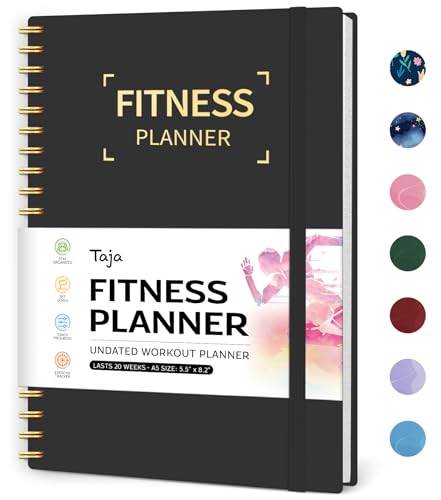Have you ever wondered why athletes and fitness enthusiasts swear by ice baths? In this guide, we’ll walk you through everything you need to know about using an ice bath effectively. From the preparation process to step-by-step instructions and post-bath procedures, we’ve got you covered.
Key Takeaways
- Proper preparation, like choosing the right attire and setting the correct temperature, is crucial before an ice bath.
- Following a step-by-step procedure, including a pre-bath warm-up, controlled breathing, and gradual acclimation, can improve the ice bath experience.
- Implementing post-bath procedures, like drying off thoroughly, warming up, and stretching, can effectively aid muscle recovery.
Preparing for Your Ice Bath
Before taking the plunge into icy waters, it’s critical to prepare diligently. The initial steps are to pick suitable attire like swimwear or shorts and a T-shirt. Dressing appropriately provides an opportunity for your body to be fully immersed in the cold water – each inch of exposure aids in maximizing the benefits of the cold therapy and limiting the potential side effects.
Equally important is setting the correct temperature of the ice bath. The ideal range is between 50°F to 60°F (10°C to 15°C) for maximum benefits. However, newcomers to ice baths might find this chilled range daunting. If so, it’s advisable to start at a slightly warmer temperature and progressively decrease it as your body becomes accustomed to cold bath therapy. Throughout this process, remember to listen to your body and make adjustments as necessary.
Lastly, before you even consider diving in, be cautious. It’s vital to keep your body hydrated so ensure to drink enough water before the session. Additionally, if you suffer from medical conditions, particularly cardiovascular issues or Raynaud’s disease, it is essential to consult a healthcare professional before using ice baths as a recovery or therapeutic method.
Your Guide to Using an Ice Bath Effectively
- Begin with a pre-ice bath warm-up – Engage in light exercises to rev up your muscles and stimulate robust blood circulation. This warm-up phase isn’t just a formality, but it’s to ensure your body is prepared for the upcoming shock of the cold water.
- Slow descent into the ice bath – Gradually immerse yourself, starting with your feet and then moving to lower your body. Each progressive step into the cold bath might tempt your mind to panic but try to keep your focus on your breath and maintain composure.
- Adjust to the cold – Now that you’re in, find a time frame that suits you. Shorter durations are a perfect starting point. As your body adapts to the icy temperature, you can then consider elongating the time in the bath. A suggested starting point is between 5 to 15 minutes.
- Breathe – When your body is under any stress, deep, slow breaths are your best friend. They can help you stay relaxed and curb the initial shock of the cold. Try to inhale through your nose to a count of five, hold for two, and then exhale through your mouth for seven counts.
- Acclimate – As your body and mind grow accustomed to the cold bath routine, don’t hesitate to challenge yourself by slightly cutting down the temperature and extending the bath duration. This will help your body become more adaptive to the cold and potentially reap more benefits.
Procedures to Follow Post-Ice Bath
The moments immediately after you step out from the icy waters are as crucial as the pre-bath preparation and the bath itself. It’s not advisable to simply get up and move on with your day. What you do post-bath can significantly impact your body’s response to cold therapy and its effectiveness. So here are some pointers:
- Dry yourself – Ideally, use a towel to pat yourself dry as quickly as possible. Try to avoid rubbing as this can irritate the skin which might be slightly numb from the cold.
- Get Warm – Following the jolt to your system from the icy bath, it’s equally as important to gradually raise your body temperature. Engage in light exercises or wrap yourself snugly in a warm blanket to aid your body in its normalizing process.
- Gentle stretching – If necessary, execute some light stretches to loosen any tensed muscles. This promotes blood circulation, aids in relaxation, and encourages a smooth recovery process post-ice bath.
Tips to Elevate Your Ice Bath Experience
Ice baths need not be a dreaded process but can indeed be substantially improved with a few simple tips:
- Tune into music – Utilize your favorite tunes to distract your mind from the cold water and make the time seem to fly past faster. Consider creating a custom ice bath playlist that motivates and calms you simultaneously.
- Meditative techniques – Practicing mindfulness or visualization during the ice bath can help manage the stress and keep you focused and relaxed.
- Stay positive – Remind yourself consistently of why you’re subjecting yourself to the cold. The benefits for muscle recovery, reduced inflammation, and overall health improvement can be a significant motivator to stay consistent with your ice bath routine.
- Check out the best ice baths for home use – from permanent to inflatable, inside or outside, with a chiller or not, etc.
Final Thoughts
Using an ice bath correctly can provide numerous benefits for muscle recovery and overall health. By preparing properly, following step-by-step instructions, taking necessary precautions, and implementing post-ice bath procedures, you can maximize the therapeutic effects of this cold therapy.
| # | Preview | Product | Price | |
|---|---|---|---|---|
| 1 |

|
Surgical Equipment and Supplies |
$77
$70 |
Add to Cart |
| 2 |

|
Fitness Workout Journal for Women & Men, A5(5.5" x 8.2") Workout Log Book Planner for Tracking,... |
$9
$8 |
Add to Cart |
Disclosure: Some of the links in this article may be affiliate links, which can provide compensation to me at no cost to you if you decide to purchase. This will help grow this site and help more people. Thank you for making a difference!
| Step | Description |
|---|---|
| 1. | Pre-ice bath warm-up |
| 2. | Sink into the ice bath gradually |
| 3. | Adapt to the cold and adjust duration |
| 4. | Breathe deeply and stay relaxed |
| 5. | Challenge yourself and enhance adaptability |


